Planted Aquarium Blogs
Nutrient Deficiency Guide for Freshwater Planted Aquarium
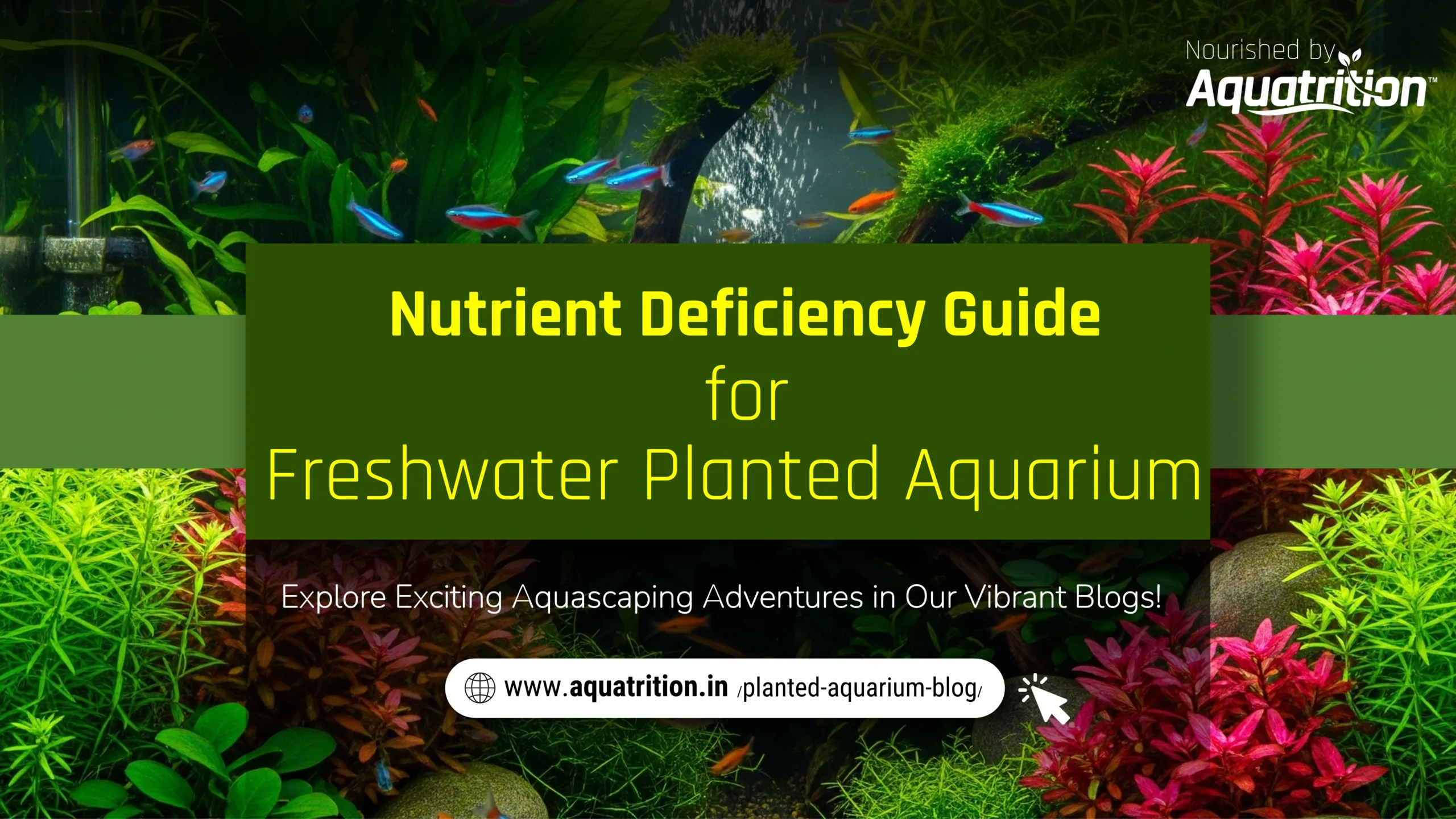
I. Introduction: Why Nutrients Matter in a Freshwater Planted Aquarium
A freshwater planted aquarium is more than just a beautiful aquascape it’s a self-contained living ecosystem. Much like a garden, each element in the aquarium, from the substrate to the lighting and water quality, plays a critical role in supporting healthy plant life. But at the very heart of plant vitality lies one foundational pillar: nutrients.
Aquatic plants require a balanced supply of essential nutrients to perform photosynthesis, develop vibrant coloration, produce healthy leaves and roots, and maintain overall growth. These nutrients fuel everything from leaf formation to oxygen production, which in turn supports fish and beneficial bacteria in the tank.
When there’s a disruption in this balance whether due to a lack of key macronutrients like Nitrogen or Potassium, or micronutrients like Iron or Magnesium plants begin to show visible signs of stress. Common symptoms like yellowing leaves, brown edges, holes in foliage, or stunted growth are not just cosmetic they’re indicators of nutrient deficiencies that can compromise the entire ecosystem over time.
II. The Role of Nutrients in Aquatic Plant Health
Nutrients in planted aquariums fall into two main categories:
- Macronutrients – Needed in Larger Quantities – These are the primary building blocks that plants consume in relatively high amounts. Without sufficient macronutrients, plants struggle with basic functions like photosynthesis, cell development, and tissue formation.
- Micronutrients – Needed in Trace Amounts – Though required in smaller quantities, micronutrients play vital roles in enzyme activation, coloration, and plant metabolism. Even minor deficiencies can lead to visible signs of distress in aquatic plants.
Each nutrient supports a different function:
- Chlorophyll production (critical for photosynthesis)
- Root growth and branching
- Cell division and expansion
- Nutrient transport
- Resistance to stress and disease
A balanced nutrient supply enables the aquatic plants to perform these functions seamlessly. But when one or more nutrients fall short even if others are abundant deficiency symptoms appear quickly, especially in fast-growing species. That’s why it’s important to understand what each nutrient does, and how to identify its absence.
Macronutrients (Primary Nutrients)
These are the nutrients most commonly needed and depleted in planted tanks.
- Nitrogen (N)
- Function: Promotes lush leaf growth, supports chlorophyll synthesis, and overall vigor.
- Deficiency signs: Pale or yellowing older leaves, stunted growth.
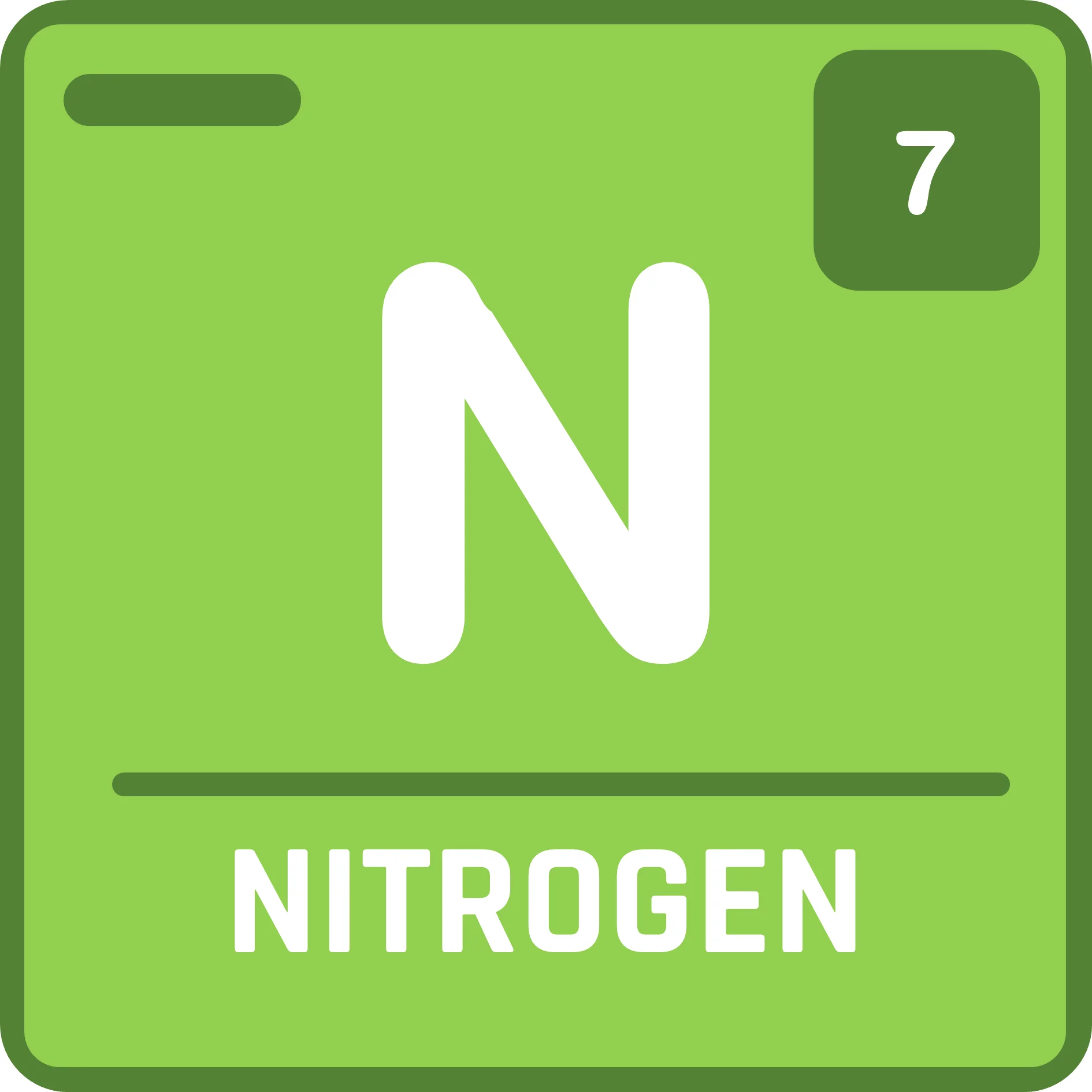
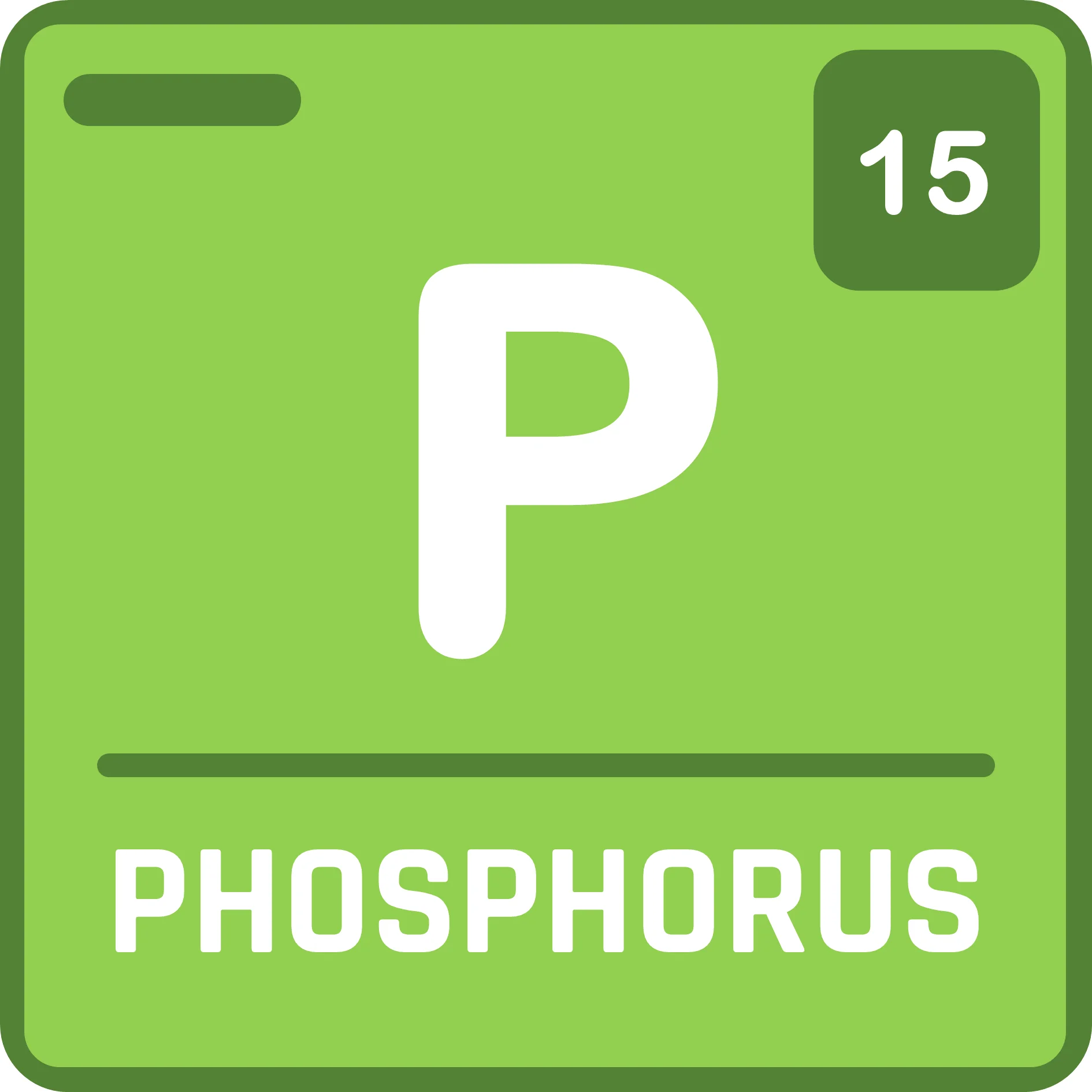
- Phosphorus (P)
- Function: Aids in root development, energy transfer, and flowering (in some aquatic species).
- Deficiency signs: Dark or dull green foliage, reddish patches, poor root growth.
- Potassium (K)
- Function: Regulates water intake, cell function, and nutrient movement within the plant.
- Deficiency signs: Pinholes in older leaves, yellowing around edges, weak stems.
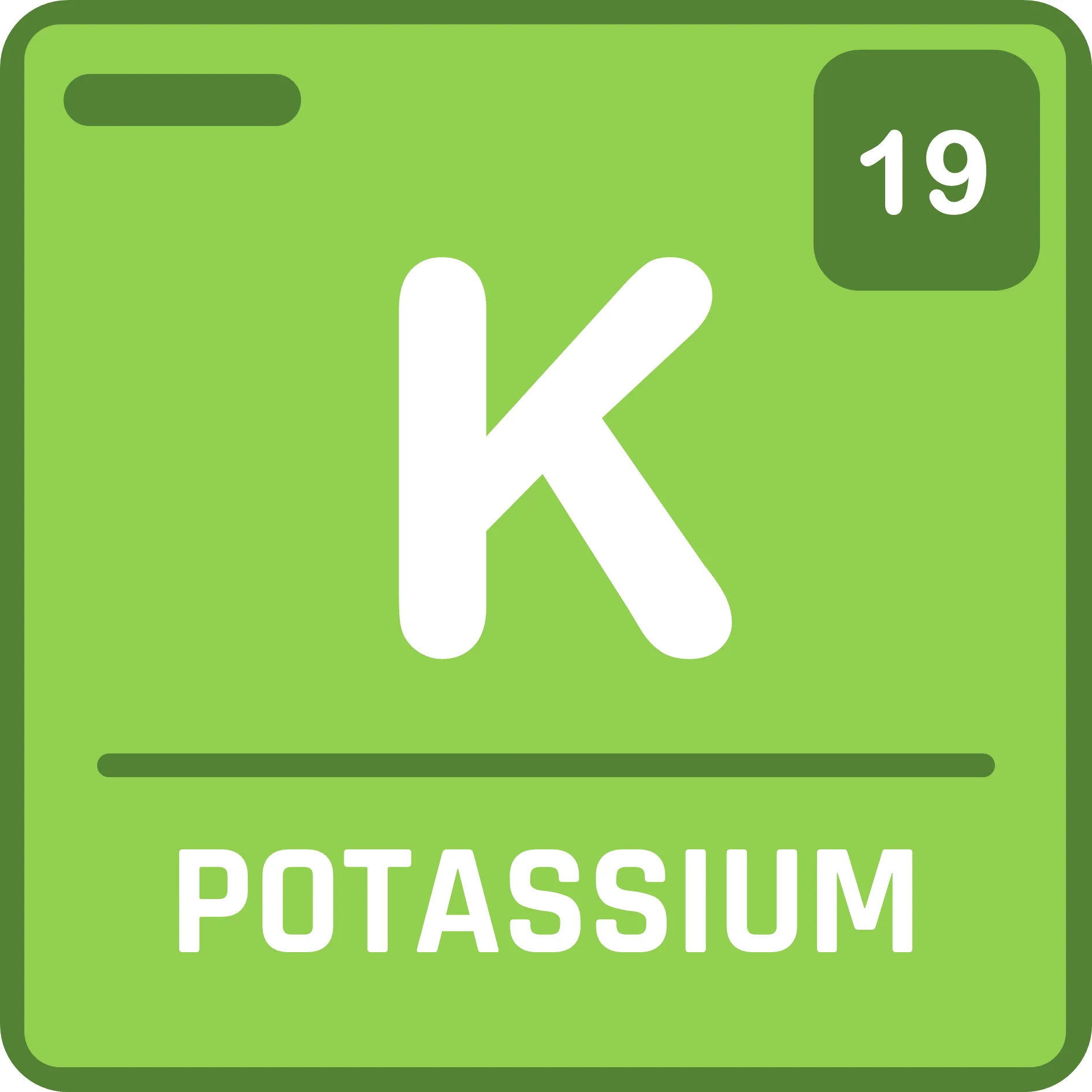
Secondary Macronutrients
Though required in slightly smaller quantities, these nutrients are still critical:
- Calcium (Ca): Essential for cell wall structure, new root tips, and growing leaves.
- Magnesium (Mg): Central component of chlorophyll molecules. Deficiency leads to interveinal yellowing.
- Sulfur (S): Important for amino acid and enzyme production.
Micronutrients
Micronutrients are often included in trace element mixes. Though small in volume, their importance cannot be understated:
- Iron (Fe): Needed for chlorophyll formation and vivid green or red coloration.
- Manganese (Mn): Helps with enzyme function and photosynthesis.
- Zinc (Zn): Influences growth hormone production.
- Copper (Cu): Supports protein metabolism and root development.
- Boron (B): Assists in cell wall formation and reproductive growth.
- Molybdenum (Mo): Helps convert nitrates into usable nitrogen.
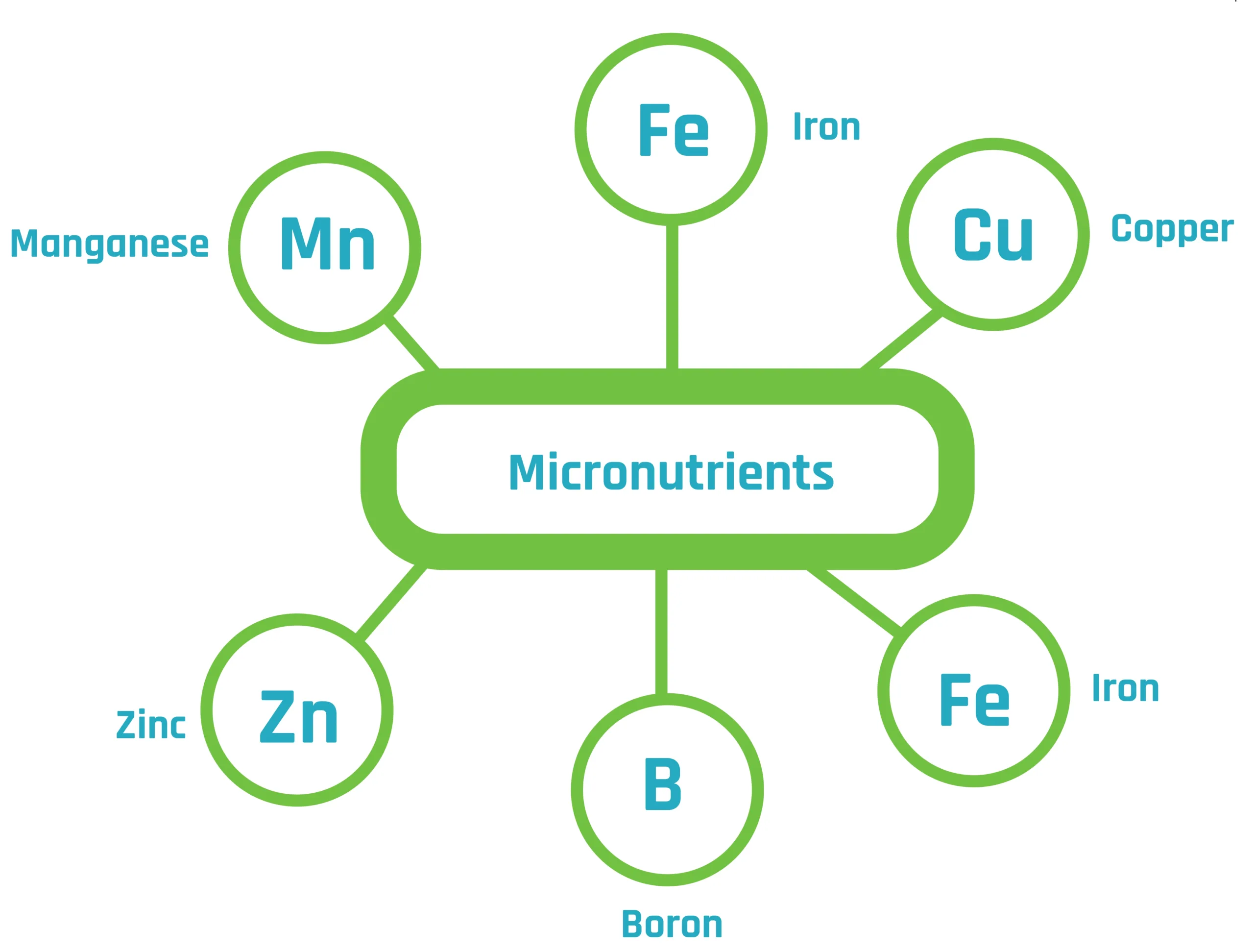
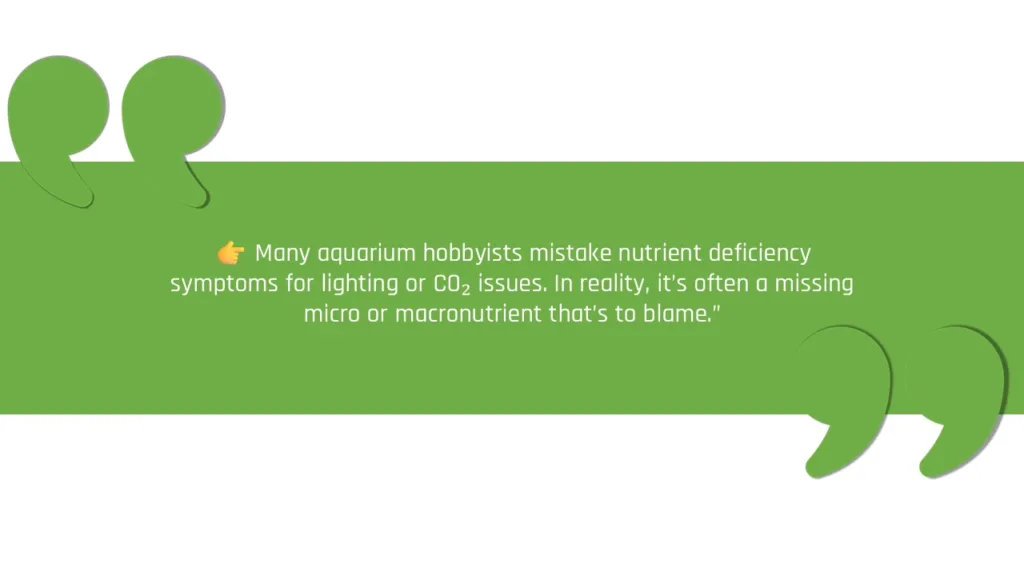
III. Visual Symptoms of Common Nutrient Deficiencies
Diagnosing nutrient deficiencies in a freshwater planted aquarium can feel like plant detective work but visual symptoms often give away what’s missing. By observing the pattern of damage, leaf type affected, and overall plant behavior, one can identify and correct deficiencies before they become severe.
Nutrient | Visible Symptoms | Affected Leaves | Commonly Affected Plants |
Nitrogen (N) | Yellowing of older leaves, stunted growth | Older leaves | Stem plants like Ludwigia, Bacopa |
Phosphorus (P) | Dark, dull leaves; reddish hues; poor root growth | Older leaves | Amazon Sword, Cryptocoryne |
Potassium (K) | Pinholes in leaves, burnt edges, weak stems | Older leaves | Java Fern, Anubias |
Iron (Fe) | Pale yellow new leaves, green veins (chlorosis) | New leaves | Red stem plants, Rotala, Alternanthera |
Magnesium (Mg) | Interveinal yellowing (veins stay green) | Older leaves | Hygrophila, Vallisneria |
IV. Diagnosing Nutrient Deficiencies: What to Look for and How to Test
Even the most beautifully lit and CO2 injected freshwater planted aquarium can suffer if nutrients are not balanced. Correctly diagnosing a deficiency is the first step toward restoring lush, healthy aquatic plants.
1. Which Leaves Are Affected?
- Older leaves (at the bottom): Symptoms here typically indicate a deficiency in mobile nutrients like Nitrogen, Phosphorus, and Potassium. These nutrients move to new growth when in short supply, leaving older leaves starved.
- Newer leaves (at the top): Indicate a lack of immobile nutrients such as Iron, Calcium, and Boron, which cannot move from older to newer tissues.


2. What Kind of Discoloration or Damage?
- Yellowing (Chlorosis): Common with Nitrogen, Iron, Magnesium deficiencies.
- Browning or burnt tips: Seen in Potassium or Calcium deficiency.
- Interveinal chlorosis: Yellowing between leaf veins (common with Magnesium and Iron issues).
- Holes or pinpricks: Often a sign of Potassium deficiency.
- Twisted or deformed leaves: Suggests Calcium or Boron deficiency.
3.Growth Form and Pattern
- Stunted new growth: Possible Iron or Calcium issue.
- Weak stems or poor root development: Could point to a Phosphorus or Nitrogen deficiency.
- Loss of coloration in red plants: Often Iron-related.

Testing Water for Nutrient Levels: When Visuals Aren’t Enough
While plant symptoms are informative, they can sometimes overlap or be misread. This is where water testing kits come in.
Nutrient | What It Affects | Recommended Test |
Nitrate (NO₃) | Leaf color, plant growth | Liquid nitrate test kit or electronic meter |
Phosphate (PO₄) | Root energy, leaf shape | Phosphate drop test kit |
Potassium (K) | Edge burn, pinholes | Potassium test kit (optional, less common) |
Iron (Fe) | Leaf color in new growth | Iron drop test kit |
General Hardness (GH) | Indicates Calcium & Magnesium presence | GH test kits |
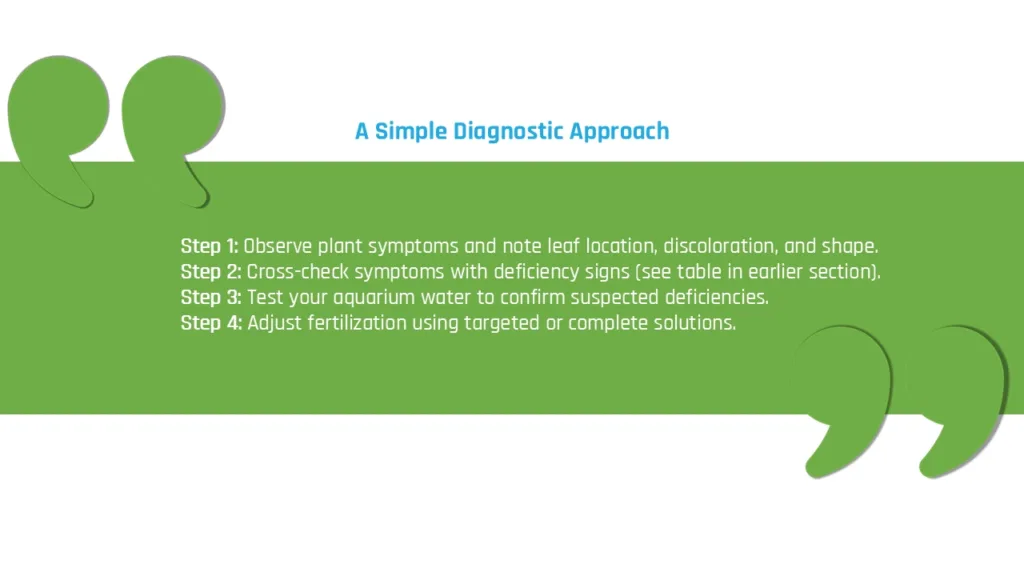
For example, if your red stem plants are pale and new growth is yellow, it’s likely an Iron deficiency. Confirm with an Iron test, and then supplement using Iron Plus.”
V. How to Fix Nutrient Deficiencies in Freshwater Planted Aquarium
Once we’ve identified the nutrient gaps, it’s time to take action. Addressing deficiencies in a freshwater planted tank requires a combination of the right supplements, consistency, and understanding your tank’s ecosystem.
Using Targeted Nutrient Solutions
When specific symptoms point to a particular deficiency, use element-specific fertilizers to bring balance back:
- For Nitrogen Deficiency
Use Elemental Nitrogen to restore healthy green foliage and promote robust leaf and stem development, especially in stem plants and fast growers.
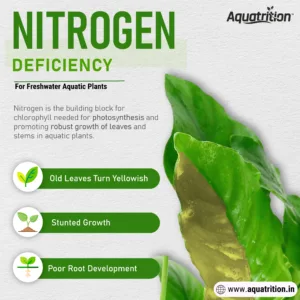
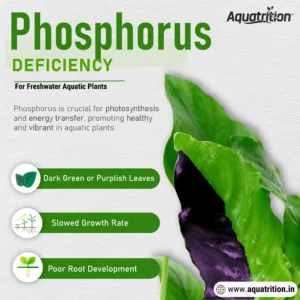
- For Phosphorus Deficiency
Apply Elemental Phosphorus to support root growth and cellular energy transfer. This is crucial for plants like Amazon Swords and rooted aquascape plants.
- For Potassium Deficiency
Dose with Elemental Potassium to prevent pinholes and edge burn, common in ferns and anubias.
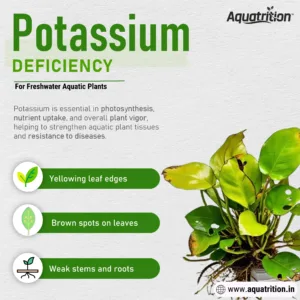
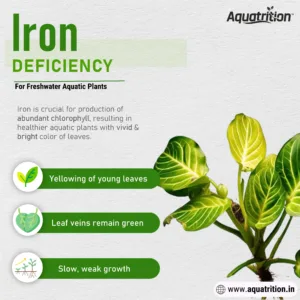
- For Iron Deficiency
Use Iron Plus to maintain vibrant reds and healthy new growth in red stem plants, Rotala, and Ludwigia.
For Micronutrient Deficiency
Supplement with Trace Plus to provide essential trace elements like manganese, boron, and zinc—critical for enzyme function and vibrant coloration.
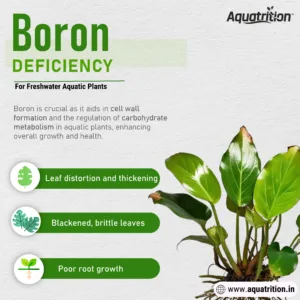
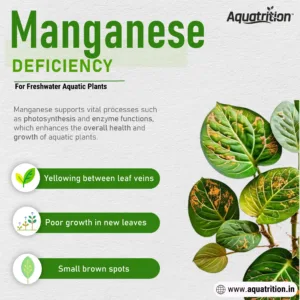
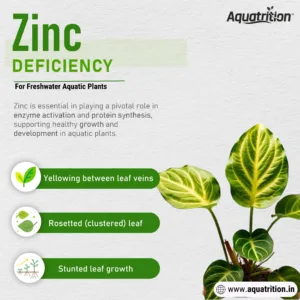
Using an All-in-One Formulation
If one is unsure which nutrient is deficient or to aim for a simple, consistent routine, one should opt for a balanced all-rounder:
- Complete Nourishment: A comprehensive solution covering all macro and micro nutrients—ideal for most planted tanks.
- Optimum Nourishment: Designed for aquariums with moderate lighting and CO₂ levels, this is perfect for hassle-free growth.
These products fall under Aquatrition’s All-in-One Aquarium Fertilizer category and are perfect for beginners and hobbyists who want guaranteed, balanced results.
Considering CO₂ and Light Balance
A healthy planted tank is more than just nutrients.
- More Light = More Demand
High-intensity lighting accelerates plant metabolism, which increases the demand for nutrients and CO₂. If one is using high-power lights without proper fertilization or CO₂, deficiencies will show up faster.
- Supplement with CO₂
If not injecting CO₂ gas, one should consider using Liquid Carbon to enhance photosynthesis and keep algae in check. It provides a bioavailable form of carbon that’s beginner-friendly and effective.
VI. Conclusion: Healthy Plants, Healthy Ecosystem
In a freshwater planted aquarium, nutrients are just as essential as light and CO2. Think of them as the building blocks of life in an underwater ecosystem fueling growth, color, and vitality in every leaf and stem.
While it’s easy to get caught up in choosing the perfect plants or aquascaping layout, true success lies in consistent care and observation. An eye on aquatic plants. Watching for changes in leaf color, texture, or growth rate – the plants are always trying to tell us something.
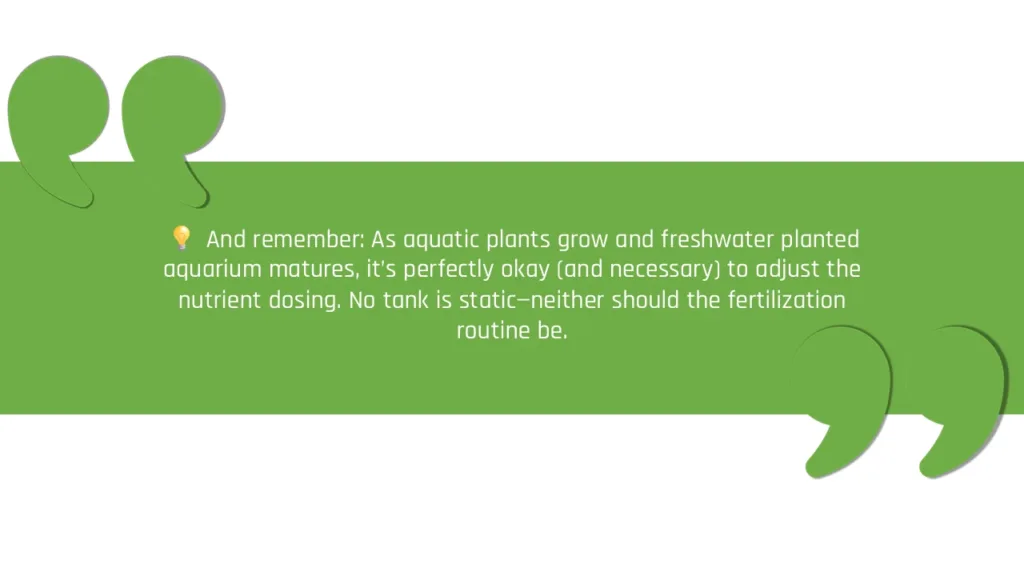
Whether one is just starting out or fine-tuning an aquascape, with the right nutrients and attention, you’re not just growing plants – you’re growing a living, breathing ecosystem.
Frequently Asked Questions
Why are nutrients important in a freshwater planted aquarium?
Nutrients are essential for aquatic plant health, coloration, oxygenation, and overall ecosystem balance in a freshwater planted aquarium.
What are the main macronutrients required by aquatic plants?
Aquatic plants primarily need nitrogen, phosphorus, and potassium in larger quantities. These macronutrients support leaf growth, root development, and resilience.
How can I identify nitrogen deficiency in aquarium plants?
Nitrogen deficiency often causes older leaves to turn yellow or pale. This is especially noticeable in fast-growing stem plants.
What does iron deficiency look like in a freshwater planted aquarium?
Iron deficiency typically shows as pale new leaves with visible green veins, particularly in red stem plants.
How can I fix potassium deficiency in aquatic plants?
Use targeted dosing with a product like Elemental Potassium to treat pinholes and leaf edge burn caused by potassium deficiency.
Can I use an all-in-one fertilizer for my freshwater planted aquarium?
Yes. Aquatrition’s Complete Nourishment and Optimum Nourishment provide balanced macro and micronutrients in a single formula.
Do light and CO₂ affect nutrient requirements?
Yes. Higher light and CO₂ levels increase plant metabolism and nutrient demand. Liquid Carbon can supplement carbon if you’re not using gas injection.
How often should I check for nutrient deficiencies?
Regular weekly observation of plant leaves is ideal. Looking out for color changes, stunted growth, or leaf damage as early signs of nutrient imbalance.
